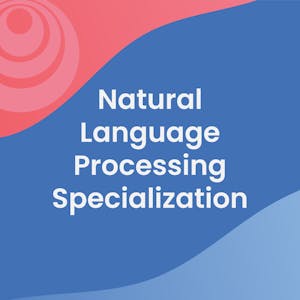Natural Language Processing (NLP) is a critical subfield of linguistics, computer science, and artificial intelligence. This course, designed and taught by experts from deeplearning.ai, provides comprehensive training in NLP and its applications in machine learning and AI. You will learn to analyze and manipulate human language using algorithms, and develop models for speech and language analysis, contextual pattern identification, and text and audio insights. By the end of the course, you will be capable of designing NLP applications for question-answering, sentiment analysis, language translation, text summarization, and chatbot development, positioning you at the forefront of the AI-powered future.
Certificate Available ✔
Get Started / More Info
This Natural Language Processing course covers essential topics such as classification and vector spaces, probabilistic models, sequence models, and attention models, providing a comprehensive understanding of NLP and its applications.
Module 1: Natural Language Processing with Classification and Vector Spaces
Module 2: Natural Language Processing with Probabilistic Models
Module 3: Natural Language Processing with Sequence Models
Module 4: Natural Language Processing with Attention Models
Deep Learning with PyTorch: Build an AutoEncoder
Introduction to PyMC3 for Bayesian Modeling and Inference provides comprehensive instruction on using PyMC3 for scalable Bayesian modeling and inference, led by...
Learn about sample-based learning methods in reinforcement learning, including Monte Carlo and temporal difference learning, and how to combine model-based planning...
This course equips learners with the essential skills and knowledge to effectively guide generative AI models through prompt engineering techniques, enabling them...